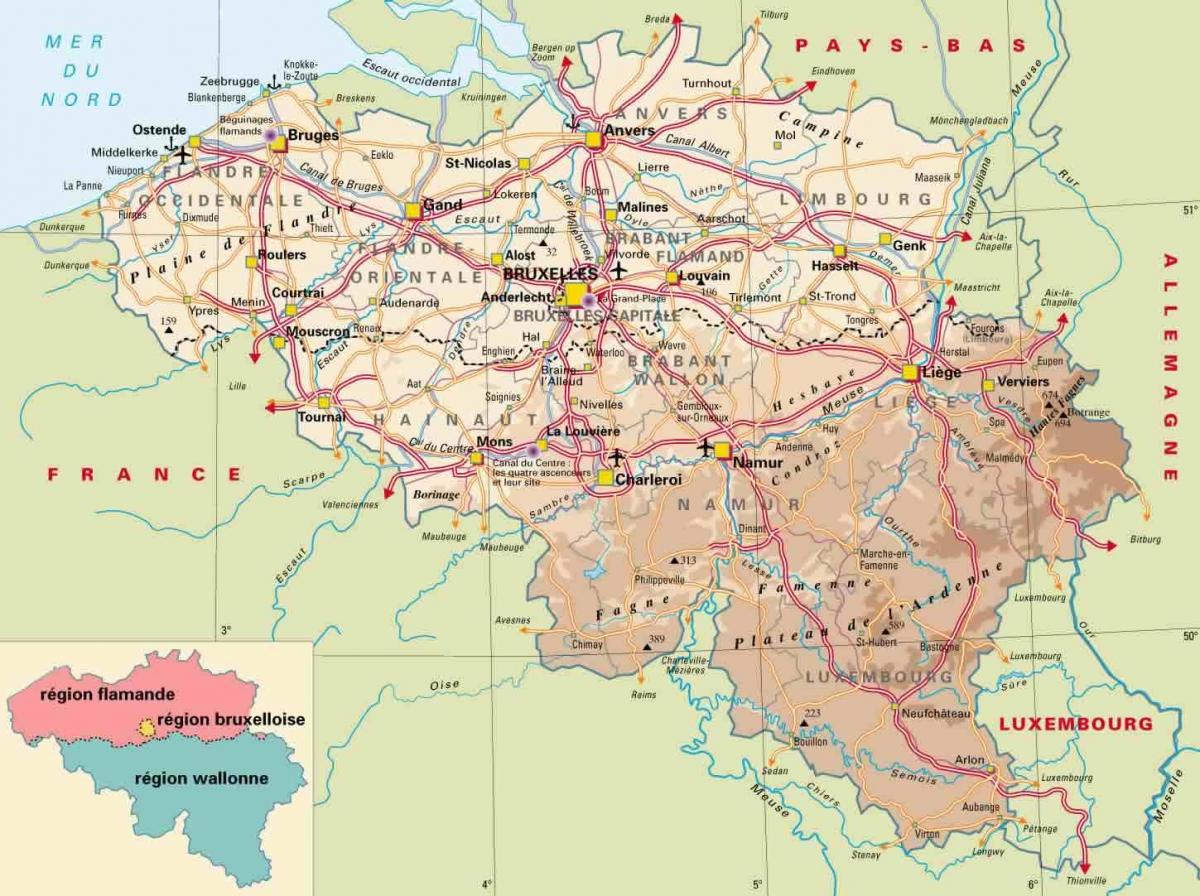search
Ardennes Belgium map
Map of ardennes Belgium. Ardennes Belgium map (Western Europe - Europe) to print. Ardennes Belgium map (Western Europe - Europe) to download. The Ardennes (play /ɑrˈdɛn/; Dutch: Ardennen) is a region of extensive forests, rolling hills and ridges formed within the Givetian (Devonian) Ardennes mountain range, primarily in Belgium and Luxembourg, but stretching into France (lending its name to the Ardennes department and the Champagne-Ardenne région), and geologically into the Eifel as its shown in ardennes Belgium map. In Wallonia, the word 'Ardenne' in the singular is commonly used for the Belgian part of the region and in the plural for the French one. Ardenne is the origin of the great industrial period of Wallonia, the second of the world (18th, 19th and 20th centuries). In France, the word 'Ardennes' in the plural, together with the definite article, is commonly used to refer to the French department of that name.
Much of the Ardennes is covered in dense forests, with the mountains averaging around 350–700 m (1,148–1,640 ft) in height but rising to over 694 m (2276.9028;ft) in the boggy moors of the Hautes Fagnes (Hohes Venn) region of south-eastern Belgium as its mentioned in ardennes Belgium map. The region is typified by steep-sided valleys carved by swift-flowing rivers, the most prominent of which is the Meuse. Its most populous cities are Verviers in Belgium and Charleville-Mézières in France, both exceeding 50,000 inhabitants. The Ardennes is otherwise relatively sparsely populated, with few of the cities exceeding 10,000 inhabitants with a few exceptions like Eupen or Bastogne.
The Ardennes includes the greatest part of the province of Luxembourg, the south of the province of Namur and the province of Liège, and a very small part of Hainaut and the main part of the French Département called Ardennes as you can see in ardennes Belgium map. Before the 19th century industrialization, the first furnaces in the four Walloon provinces and in the French Ardennes used charcoal for fuel, made from harvesting the Ardennes forest. This industry was also in the extreme south of Luxembourg, in the region called Gaume. The most important part of the Walloon steel industry, using coal, was built around the coal mines, mainly in the region around the cities of Liège, Charleroi, La Louvière, the Borinage, and further in the Walloon Brabant (in Tubize). Wallonia became the second industrial power of the world in proportion to its territory and to its population.


